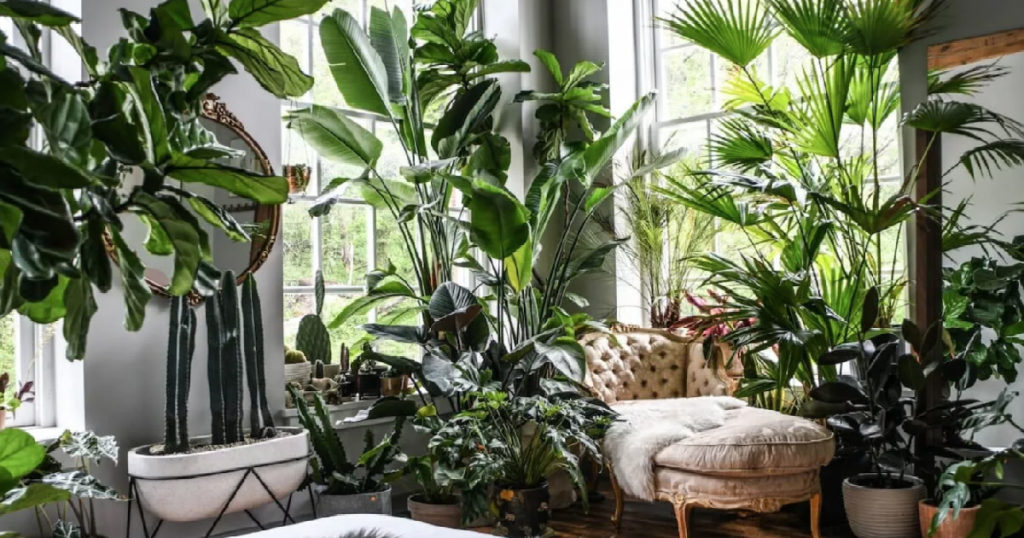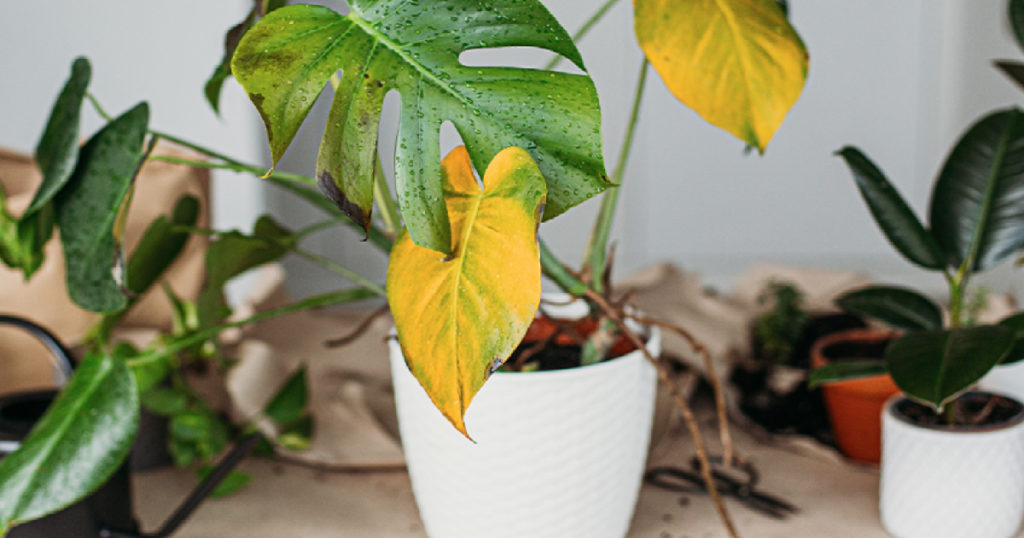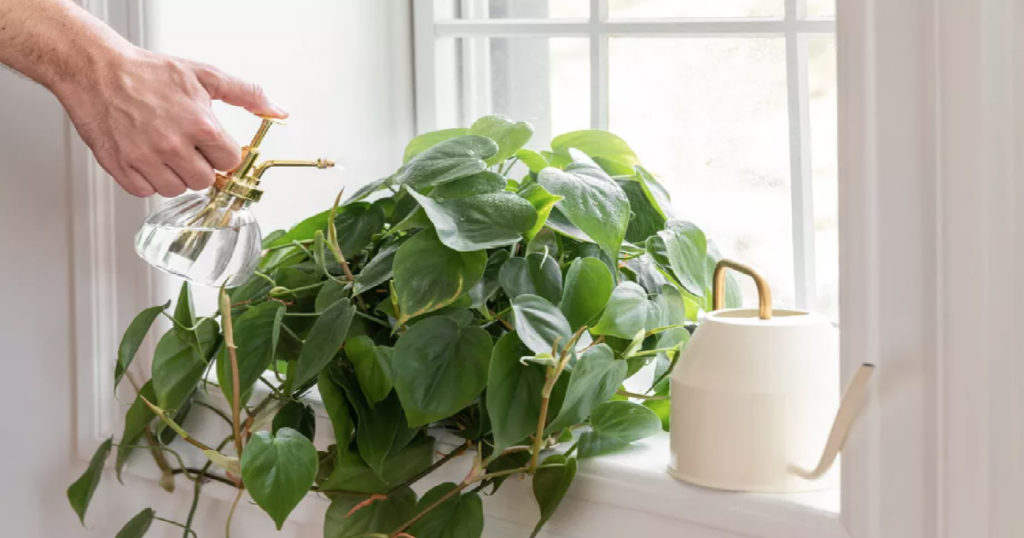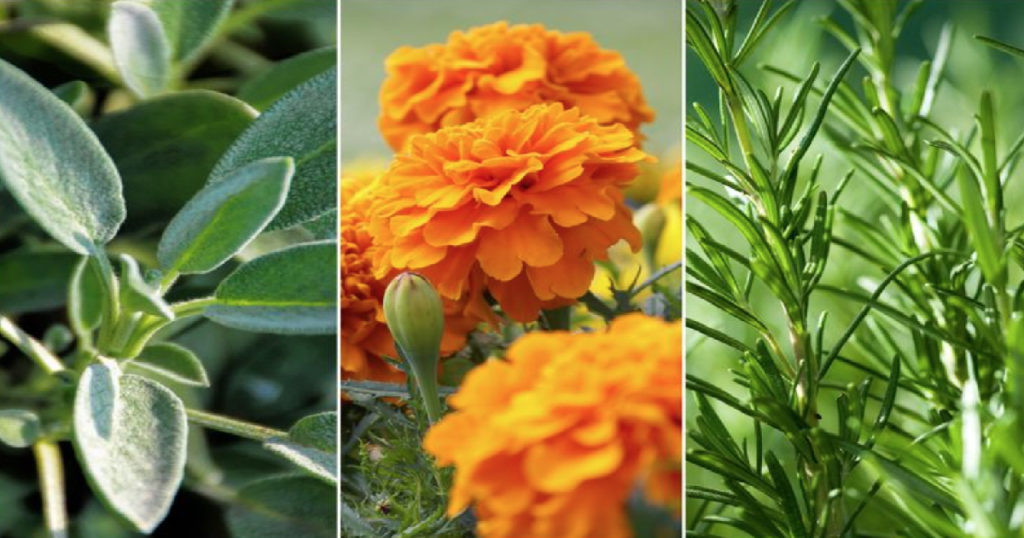Today we suggest that you read the article on the topic: “Do plants attract bugs?”. Factors provoking the attack of dangerous insects: We have prepared the material and tried to fully cover the topic. Dried leaves, a weak stem, damage to the root system, and nondescript buds are the result of the activity of parasites that feed on plant sap.
Spider mites, caterpillars, thrips, earwigs, and mealybugs – are not a complete list of aggressors attacking flowers. How do recognize pests on indoor plants? How to deal with bugs, spiders, and ticks?

Do houseplants really attract bugs: causes
Why do my houseplants get bugs? Factors provoking the attack of dangerous insects:
- excessive humidity (less often – insufficient watering), stagnation of water in the pan under the flowerpot;
- poor house plant`s care, a rare inspection of leaves, stems, potting soil in a flowerpot;
- inattention to the first symptoms of an infection;
- ignorance of the characteristic features that make it possible to identify pests when settling on an indoor flower;
- insufficient loosening of the potting soil;
- rotting of vegetable fertilizers (tea brewing): a moist substrate with a certain smell attracts parasites;
- buying infected new plants with old potting soil in a garden center;
- placement of the potted indoor plant in the kitchen, accumulation of greasy on the leaves with the poor performance of the hood.
The room where cooking is constantly taking place is not the best area for a home flower. High room temperature and excess humidity in indoor plants attract bugs.
Do plants attract bugs? And how indoor plants attract bugs?
Flower growers know how difficult it is to breed some harmful pests that feed on various parts of potted plants indoors. The success largely depends on understanding what kind of pesky bugs settled in the flowerpot.
Parasites have different shapes and sizes, but most insects and arthropods prefer succulent young shoots and buds of house plants. Eggs are found on leaves and in the potting soil.
Some houseplant pests are visible on a potted plant, others hide from the underside of greenery, gather in the area where leaves are attached to the stem, or hide in the upper potting mix.

Mealy bug
Pest information:
- A tiny insect is difficult to see without a magnifying glass: dimensions – no more than 6 mm;
- A white waxy powder-like coating protects common pests from many insecticides. The destruction of the mealybug requires thoroughness and regular processing of the affected flowers;
- Insects settle in the axils of the plant’s leaves, braid the leaves with a thin white cobweb;
- The optimal conditions for the development of a mealybug are high humidity plus a temperature of +25°C;
- Parasites accumulate in groups, it seems that the leaves are covered with dirty white “cotton wool”;
- Most parasites live on stems, and leaves, and suck out the sap. Some species parasitize on the roots, depriving flowers of useful substances;
It is not by chance that amateur flower growers consider the mealybug a dangerous pest: infected plants often die.
Folk methods:
- tincture with lemon or orange zest;
- dish soap decreases fungal growth;
- indoor gardening treatment with running water;
- garlic infusion;
- decoction of field horsetail;
- the mixture of water and olive oil.
Are spider mites dangerous for indoor and outdoor plants?
Pest characteristics:
- a spider mite no larger than 1 mm in size does a lot of harm: larvae and adults suck the sap from the flower, provoke the loss of chlorophyll, yellowing of the leaves;
- gradually discolored leaves dry up, curl, fall off, and the indoor flower weakens;
- the areas on which tiny mites are located are covered with a thin white cobweb;
- adult parasites are red-brown or greenish, they are difficult to recognize on leaves and stems;
- the females are fertile, with hundreds of new eggs emerging every three days. Without regular inspection, thousands of ticks will quickly suck the sap, the indoor flower will wither.
How to get rid of:
- the main thing: pay attention to the condition of the plant.
- treatment with biological preparations gives an effect with a weak infection of the flower.
- folk remedies will complement the chemical insecticides and kill bugs: a decoction of onions, potato tops, garlic, an infusion of dandelion and celandine;
- ticks do not like hot water: to destroy adults and larvae, wipe the leaves with a sponge dipped in a heated liquid.
Thrips
Description of the pest:
- small flying insects with an elongated body, the color is a combination of black or dark brown on top with reddish and yellow in the lower part;
- they are small – no more than 1.5 mm in length;
- insects lay eggs on greenery, and do not live on the soil surface;
- it is not difficult to recognize the appearance of thrips: the leaves acquire a grayish-brown color from below and a silvery tint from above;
- on the underside of the leaves are colonies of tiny pests;
- with the active reproduction of harmful insects, indoor plants weaken and lose their decorative properties.
How you can prevent bugs:
- sufficient watering: thrips do not like damp soil;
- regular inspection, mechanical removal;
- treatment with fungicides and systemic insecticides that penetrate the roots, stems, and leaves of indoor flowers.

Effective Methods:
- insecticidal soap solution against thrips. Prepare a strong foam, apply liberally to problem areas, and carefully process all the leaves on which traces of the activity of harmful creatures are visible. For a noticeable effect, experienced flower growers recommend washing off the home remedy only after a day. After the procedure, rinse the greens well with clean water;
- sticky tapes located near the flowers will help get rid of insects;
- a decoction of potato tops is a proven folk remedy against thrips. Steam half a bucket of green mass with boiling water, leave in standing water for 8 hours, remove leaves and stems, and strain the product. Spray on infected flowers daily.
Whitefly
The tiny whitefly prefers to settle on the underside of the leaf. She loves fuchsia, Pelargos, and even fragrant mint very much. How to discover it? Very easy! Just touch your plant and tiny butterflies will immediately fly into the air. These insects will leave a white coating on indoor flowers.
The main reasons for the appearance are as follows:
- waterlogging of the soil resulting from too frequent watering of indoor plants;
- the presence in the soil of components that allow excess moisture to linger for a long time;
- infected soil purchased on the market or in a store along with a new flower;
- fertilizing flowers with tea leaves or other means that are not intended for such purposes;
- the penetration of insects into the home through a window, door, or ventilation grill.
They can appear on the ground for a number of the following reasons:
- Excess moisture from excessive watering, and stagnation of excess liquid in the pot tray.
- Insufficient loosening of the soil.
- Transplanting a flower into contaminated soil.
- Rotting of vegetable fertilizers, which attracts insect pests with its smell.
- Acquisition of infected flowers and placing them next to domestic ones can be fraught with the spread of insects to healthy potted plants.
- Placement of flowers in the kitchen, where their pores and soil are clogged with fat that is released during cooking.
- Watering the soil with substances that are not intended for these purposes, for example, the remains of drinks.
Harmful plant pests: aphid
Pest characteristics:
- small insect (up to 1 mm), oval body, brown color;
- live along the central vein on the underside of the leaves;
- the body is covered with a shell that protects against the effects of toxic drugs;
- the longer the pest parasitizes on the flower, the worse the condition of the plant: the leaves dry, turn yellow, curl, and fall off.
How you can fight bug infestation?
Some insects you can remove mechanically, wipe the leaves with alcohol or soapy water, in case of severe infection, cut off the affected leaves, and burn.
What are indoor plants that don’t attract bugs?
While most houseplants attract bugs, other plants don`t attract bugs. These may be a better option for you if you can’t provide an environment that will eradicate the bugs. Some examples of these types of potted plants are:
- Snake plants
- Bromeliads
- Air plants
- Venus flytraps
- Dracaena
- Aglaonema
If you don’t want to attract pests to your home, these potted plants thrive and can improve your room.

How to have indoor plants without bugs?
Compliance with the rules for caring for indoor flowers reduces the risk of pests. Each type of flower has its norms of humidity, lighting, and top dressing.
Every type of rule prevents bugs:
- optimal temperature regime in your indoor garden;
- humidity level according to the norm for a particular flower;
- enough sunlight and shade will improve plants altogether;
- regular loosening of the soil for active access of oxygen to the root system;
- fertilizer potted plants with the use of organic components and synthetic preparations;
- regular inspection of all parts of the flower to identify pests and diseases;
- the drainage system that prevents moisture stagnation;
- timely flower transplant if the flowerpot is too small;
- treatment with compositions based on natural ingredients to repel harmful insects;
- inspection of leaves, stems, and soil when you buy potted plants: often dangerous insects enter the apartment from a flower shop.
Pests of indoor flowers interfere with the normal development of plants and worsen the condition of buds, greenery, and the root system. Information about thrips, scale insects, mealybugs, fungus gnats, and spider mites will help you understand how to recognize harmful bugs and mites, and how to deal with dangerous insects.
Remember that only timely measures will help save your indoor plant. It is worth alerting even at the slightest sign of danger. Fight mercilessly with all the parasites that encroach on the green decoration of the house and the flowers will generously repay with their beauty. How to care for Mimosa Pudica, Cryptanthus wingless and other plants can be found in our other articles.
We hope that the article is useful for you. We welcome your comments.
What plants attract the most bugs?
Plants that produce nectar, pollen, or other sweet substances tend to attract the most bugs, such as flowers, fruits, and vegetables.

